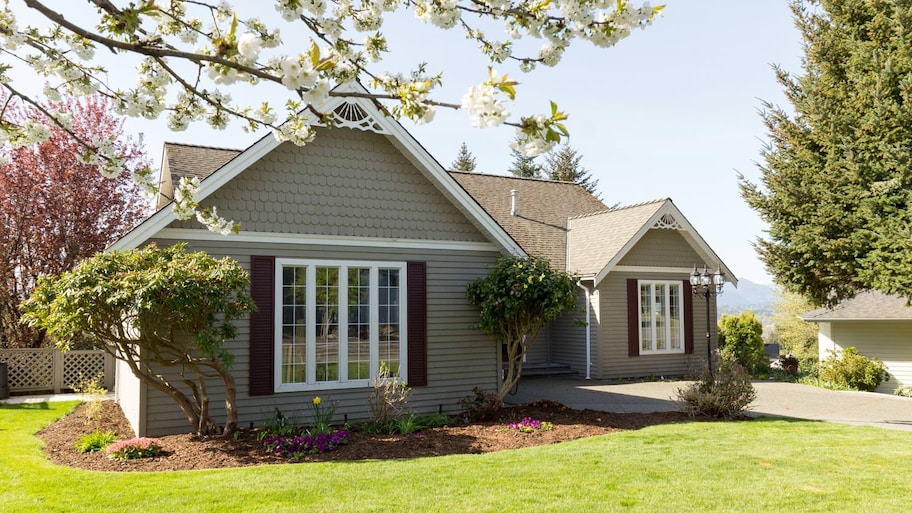Turn crawl spaces into a more useful part of your home
If you live in an area where the weather plays a major role in your indoor comfort, you’re probably searching for ways to make your home feel like, well, a home—not a sauna in the summer or a refrigerator with a mortgage in the winter.
Adding insulation underneath your home may sound like an unnecessary way to spend your hard-earned cash. But the truth is your crawl space is a part of your home’s ecosystem, and its condition is tied directly to its energy efficiency. In this post, we’ll discuss how something as simple as insulating it can benefit your entire space.
What Is a Crawl Space?
It’s a hollow, narrow area—think hands and knees height—that works as a buffer between your home’s first floor and the ground. It also provides easy access to your wiring and plumbing systems. While some people consider it a basement, crawl spaces are smaller, unheated, and unlivable.
But that doesn’t mean they’re unusable. In fact, crawl spaces can make a drastic difference to your home when insulated.
Benefits of Crawl Space Insulation
How can adding insulation to this dark, dingy space be beneficial? Crawl space insulation helps to keep your belongings and space safe from floods. It does so by providing thermal insulation, keeping your home energy-efficient, and preventing your pipes from freezing in the winter. Insulation also helps protect the crawl space by waterproofing against light to moderate precipitation.
Here are some more pros of crawl space insulation.
Increases Energy Efficiency
When your crawl space isn’t insulated, the home uses more energy than necessary to heat up or cool off your home. Just like your attic, even if you don’t frequently visit your crawl space, it’s still attached to your house and impacts your internal temperature and—by default—your energy efficiency.
By insulating your crawl space, you’ll seal it up from being affected by the temperature outdoors, which will help your home feel way more comfortable. Plus, according to the Environmental Protection Agency (EPA), you can save 15% on average on energy costs since your energy bill is impacted by how efficiently you regulate your home temperature.
No Pests
A crawl space provides the perfect shelter for most pests: It’s dark, damp, and out of the elements. There’s nothing worse than having unwelcomed house guests take over your crawl space—except if those pests move into your living space.
By insulating your crawl space with a durable insulation type, you can keep critters out of your space and away from you and your home.
Added Storage
Extra storage space has loads of benefits for the average homeowner. And while a crawl space can be the answer to most of your storage needs, it can do more harm than good if it isn’t insulated. Insulate the foundation so you can place your belongings in a safe place that’ll keep them protected while being out of sight. Win-win, anyone?
Improves Air Quality
Crawl spaces let unfiltered air into your home. Insulation can reduce pollutants entering your home and help increase indoor air quality.
Types of Insulation Used in Crawl Spaces
Let’s take a quick look at the different types of crawl space insulation.
Fiberglass Batts
They’re a thick blanket made from reinforced plastic and fine-glass fibers. They’re placed between the exposed joists when used in crawl spaces and cost $0.30 to $1.50 per square foot, making it the least expensive option for crawl spaces. However, they attract moisture that can lead to mold and may make a cozy nest for pests. Fiberglass batts also start losing their effectiveness in 15 years.
Spray Foam
This type is a liquid latex or polyurethane foam that expands and hardens to fill gaps within its path. Once spray foam dries, it forms a solid protective layer against unwanted animals and weather. And unlike fiberglass, it doesn’t hold moisture, isn’t appealing to pests, and creates an air seal in your crawl space. It can last up to 80 years. Spray foam insulation costs $0.50 to $2 per square foot.
Foam Board
Foam board insulation is a rigid panel installed against the walls of the crawl space. Like spray foam insulation, it stays where you place it, doesn’t absorb moisture or let air in, and doesn’t provide a food supply for animals. Foam board insulation also lasts for more than 100 years. On average, you’ll pay $0.25 to $1 per square foot.
Insulation Costs
The total cost you can expect to pay from insulating your crawl space varies considerably based on the insulation material, R-value (the insulation’s thermal resistance measurement), the crawl space size, if it’s vented or unvented, and its existing condition.
Since most insulation projects are fairly straightforward, you can DIY them with time, patience, and knowledge. DIY insulation projects cost up to $500.
But if you aren’t comfortable with the time and skills needed to do it on your own, an insulation contractor near you may charge $1,500 to $6,900 to complete this project.





